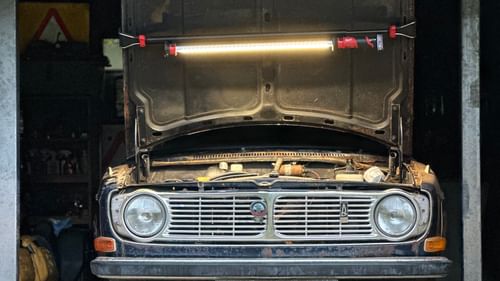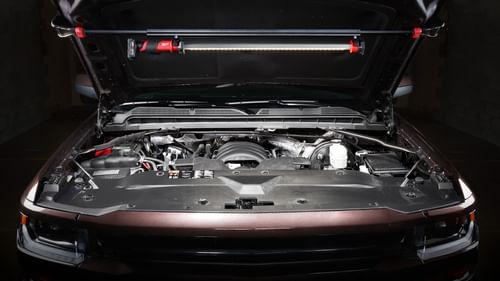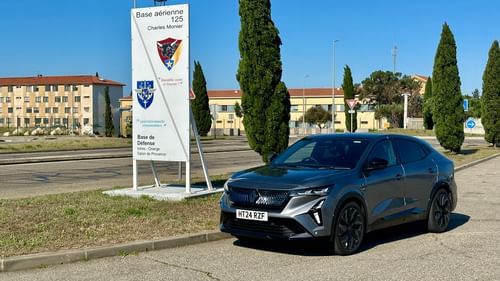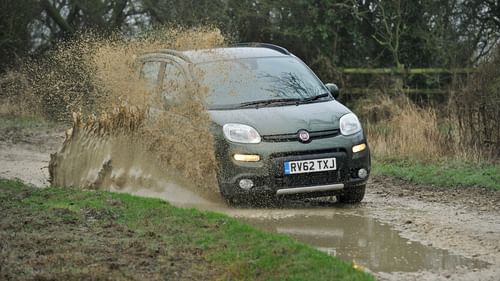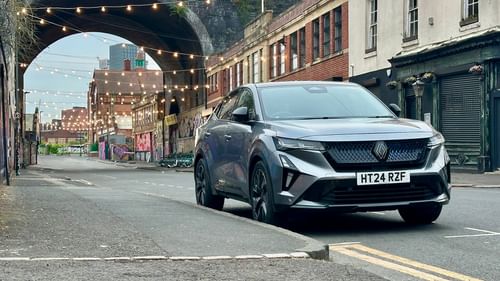Real World Reviews: Mini Clubman
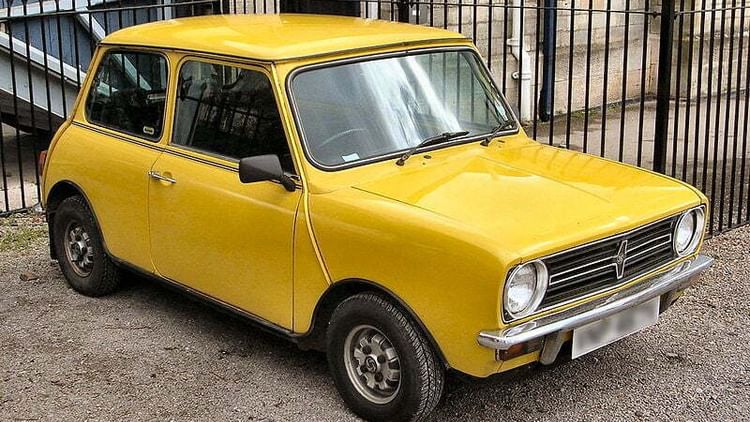
In the first of the new series of Real World Reviews, Rob Griggs-Taylor (@robgt2 on twitter), takes a reflective look back at his first car - a Mini Clubman.
Your first car is a rite of passage. You choose something that projects an image, carefully cultivated within the limits of a tight budget and ludicrous insurance quotes. It will be an extension of your personality, the first impression when you arrive. No matter what the car is, or in what condition, many people fall in love with their first car and often go the extra mile when fiscal restraint and common sense are screaming logic, but the heart is committed to insane and costly action.
Some background; I became a petrolhead sometime soon after birth in late 1968. There are photos in existence of me standing on the drivers seat of my Grandad's 1970 Cortina 1600E, clinging onto the steering wheel, and no-doubt making appropriate sound effects.
The time between then and getting my provisional driving licence was utterly, completely, totally interminable. But my seventeenth birthday finally arrived, along with the upgrade from a Honda 50 moped to a Suzuki 100 motorcycle and some driving lessons with BSM in one of their fleet of Metros.
But I didn't want a Metro, or the Nova Sport the bloke at SMT Aberdeen tried to sell me. (£3500? I wasn't even earning that much in a year!) Or a Mark 2 Escort, or even a Chrysler Sunbeam.
I wanted a Mini. But not just any Mini - no, I wanted a Mini Clubman. To friends I rationalised the less popular of the Mini shapes by explaining that there was more room to work under the bonnet, but the truth was I'd seen a Steve Kirk Motorvation drawing in Street Machine magazine and I wanted one like it.
So when an acquaintance at my local church offered me his Clubman for £350 I handed over the cash and had my Grandma co-drive me home in my very first car.

HMS 878S was built by Leyland Cars when I was 9. She was Inca yellow in colour, adorned with tinted windows, plastic wheel trims on the dinky ten inch wheels and iced with a chocolate brown vinyl roof. The seats were trimmed in black velour and there was just a speedo, fuel gauge and temperature gauge to inform, no radio and the barest of heaters. It was basic, but to my 17-year old mind that meant it had endless possibilities for making it my own.
First though it had to pass the sternest of tests; not the MoT. My Dad had to see it.
I'd been told on purchase that the vendor had included a spare battery and some jump leads. What he didn't tell me was that they were all connected to the existing battery in the boot. When the jump leads were removed the car would no longer start.
When Dad arrived he gave the car a good going over. He said it needed a few things. Like a boot floor (no part of it was within two inches of meeting the rear of the car), a rear subframe, new trailing arms, new brake pipes, a new rear valance, new front wings, new A-panels, some holes in the floor welding up, rear brake shoes, rear brake cylinders, well - you get the idea. I was henceforth banished from driving it on the basis that there was a very real chance it would fall apart around me. Clearly the car wasn't worth fixing. So we decided to fix it.
Dad trailered it home behind his Volvo 245GLT estate and the strip down started. I'd love to tell you that during this process I learned to weld, spray paint, twirl spanners generally and become a hardened car mechanic but I'd be lying because the car was seventy miles from where I lived and trips home were infrequent. However I did assist on the occasional weekends that I was there, found i had an aptitude for electrics, and I did buy some of the required parts but really Dad went to town on the car. Progress was in fits and starts as budget and time allowed but there was almost nothing that didn't get overhauled or replaced.
The 1098cc engine was treated to fresh oil, plugs and air filter, although as it later turned out oil was something that wouldn't need to be changed that often as British Leyland had developed the self-oil-changing A-series engine. You poured oil in the engine and it came out the exhaust shortly afterwards in the form of black smoke.
The front wings were replaced as were headlights. The interior was completely stripped and all the holes welded up. The rear subframe was replaced with a brand new one (which I painted in silver hammerite to make it last a lot longer than the old one). The boot floor was patched with welded in panels cut from an old washing machine. Some rewiring took place. The sills were replaced. Underneath we treated the car with underseal to prevent corrosion and we masked off and sanded all the panels for a respray. It sounds easy when you write it down, and with the benefit of a couple of decades hindsight.
Some 18 months, one written-off Allegro estate parts chaser, one stand-in Mini 1000, one older Clubman purchased for spares (my Mum had one too so it was useful to have a parts car) and far too much money later she was back on the road! Resplendent in a full respray in the original colour, and complete with spotlights, some cheap high-back bucket seats, 6-inch Pioneer speakers in the rear shelf, a radio-cassette player (cutting edge stuff!) and a 1275GT instrument display with rev counter she was ready to roll. My legendary good taste added a Mountney 13-inch steering wheel to the mix. With a red leather rim. Yes, I had a yellow car with brown roof, green tinted windows, black interior trim and red steering wheel. No, I'm not colour blind.
Two weeks later I discovered with alarming suddenness the one thing that we'd overlooked in our comprehensive strip down and rebuild. One of the front brake cylinders had a faulty seal. In normal braking this wasn't an issue but when I tried to do an emergency stop the seal burst spraying brake fluid all over the inside of one of the front drums. This had the effect of throwing the car sideways as one front wheel slowed suddenly and the other didn't. My limited driving skills knew enough to turn into the slide but not enough to know when to stop correcting. The combination of lack of skill and experience, wet cobblestones, excess speed and a narrow street resulted in a head-on impact with a wall and a lamp post after scaring the living daylights out of a man who happened to be closing his curtains as I slid past staring wide-eyed straight at him. The front bumper was flattened into some kind of ersatz chrome stripe across the front of the car, spotlights smashed, both new front wings were bent, front panel wrecked and bonnet creased.
Why was I doing an emergency stop? Because that night I'd driven past a 'road closed' sign as I was late collecting my sister and hadn't noticed the enormous hole that workmen had dug further down the poorly lit street. I hit the brake pedal as I noticed the thin orange string with red and white pastic tags tied across the road bounce off the bonnet but was going too fast to stop in time. Fortunately there was a lip on the hole which was sufficient to jump the car over in an admittedly pathetically low 'Dukes of Hazzard' style.
The car was still drivable, but by this time I didn't have enough cash to repair it and Dad was unsurprisingly unwilling to put more money and time into the project. I changed the engine for the 1275cc one out of the written-off Allegro after the original started burning through 5-litres of Tesco's finest every 120 miles. I didn't change the diff though so acceleration was spectacular as it was geared for 13-inch wheels and I still had the ten inch ones on.
Eventually my beloved Mini Clubman was sold on to an older gentleman who wanted a project that wouldn't require mechanical work. The last time I saw it in around 1990 he'd replaced all the bent panels, painted the brown roof black, refitted the original steering wheel and put the right diff on. I checked on the DVLA database and the car was last taxed in 1999 but it isn't registered as scrapped so it may be tucked away in someone's garage.
Would I buy it again?
No, I don't think so. Along with fond memories of epic drives, laughs with mates, 10cc and Godley & Creme on the cassette player, and the first taste of freedom there are negative thoughts too. The crash, the effort, some really hard family confrontations and the cost all offset the joy and leave a genuinely bittersweet taste even after all the years that have passed. Sometimes you leave a relationship having gained wisdom and you make the choice to never go back.
Your first car is a rite of passage, and for some it's an intensely memorable one.
Library image courtesy of DeFacto via Wikipedia.

